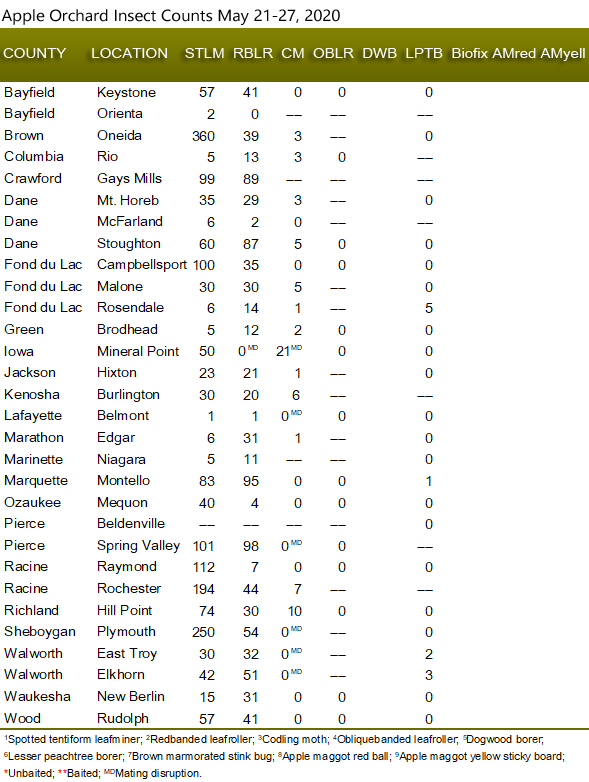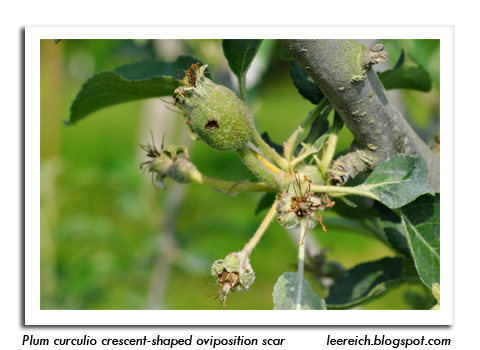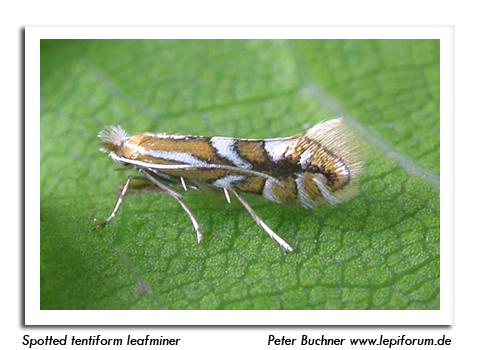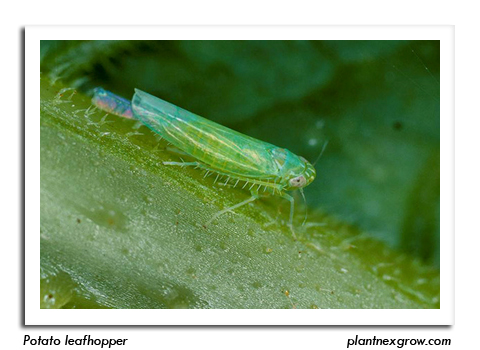
 |
|
|
Fruits
Volume 65 Number 5 Date 05/28/2020 PLUM CURCULIO - Hot temperatures at petal-fall have provided optimal conditions for plum curculio (PC) migration and egg laying this season. According to the IPM Institute, PC injury has already been observed on fruits in high-pressure orchards in southern Wisconsin. With conditions favorable for damage, apple growers are advised to begin scouting the orchard perimeter for the crescent-shaped scars, concentrating on blocks with past pressure and the largest fruits (> 5mm). Spraying perimeters more frequently is one option to reduce cover sprays. If PC injury is found past the perimeter (e.g., first four or five rows of trees) a full cover spray is recommended. OBLIQUEBANDED LEAFROLLER - The first moth flight is expected to begin next week in advanced southern locations. The OBLR degree day model predicts this event occurs following the accumulation of 600 degree days (simple base 43°F), a threshold which has not been reached anywhere in the state as of May 27. This suggests that any moths captured in OBLR traps so far are probably a non-target species such as the RBLR. The OBLR is bell-shaped and slightly larger than other fruit moths monitored by DATCP, making it relatively easy to identify. Once pheromone traps indicate that emergence of spring moths has started, weekly sampling of 10 fruit clusters and 10 terminals in the outsides, centers, and tops of five trees per orchard is recommended. Control may be justified for populations averaging three or more larvae per tree. CODLING MOTH - Warm weather spurred the start of the spring flight in the past week. Almost half of the apple orchards in the DATCP network reported their first CM captures of the season between May 23 and 26, and several reported a strong biofix set by May 25. Orchards with high pressure or a large first flight of more than 10 moths per week often apply the first larvicide at 250 degree days (base 50°) after biofix. Treatments applied at this threshold coincide with 3% hatch of the first generation larvae. If the initial flight is light or inconsistent due to cooler temperatures or rain, a stronger flight can occur after the first biofix (e.g., two-weeks later). In this scenario, the first larvicide can be applied at 350 degree days from the initial biofix, which coincides with 15% larval hatch and is timed to eliminate most of the new larvae before they enter fruits. SPOTTED TENTIFORM LEAFMINER - Moth numbers were mostly low again this week. Counts ranged from 0-360 per trap and averaged 66 per trap. The overall low activity suggests that apple orchards are between STLM flights and populations are in the larval stages. Trap counts are expected to increase sharply over the next two weeks with the start of the second flight. POTATO LEAFHOPPER - South winds last week brought the first large influx of potato leafhopper migrants into the state. DATCP surveys in alfalfa found leafhopper adults widely distributed throughout the south-central and southwest counties, in low numbers. The nymphs produced by these migrants usually appear during the second or third week of June and can be damaging to young fruit trees. TARNISHED PLANT BUG - Nymph production has started in the southern counties. Strawberry plants beginning to bloom should be sampled once a week for both adults and nymphs. Controlling the smallest nymph stages is most effective. The economic threshold for this insect in strawberries is four adults per 20 sweeps at first flower bud formation or one nymph in four flower clusters. REDBANDED LEAFROLLER - Counts of this pest generally decreased during the reporting period ending May 27. The first flight peaked 1-2 weeks ago in most orchards and numbers have been declining. The second flight will start by early to mid-June. Apple growers are reminded to replace pheromone lures in preparation for the second flight. -- Krista Hamilton, DATCP Entomologist 





|
|
|